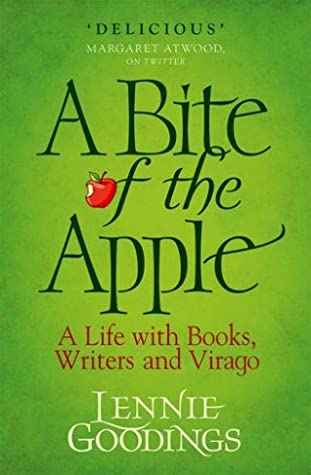Reading publishers’ memoirs is perhaps most relevant to writers who are approaching or navigating the publishing industry, but understanding more about the industry’s inner workings is useful at every stage of a writer’s career. Reading about Lennie Goodings’ experience with Virago will be of particular interest to women writers and to writers who admire and seek representation with small, independent publishers.
Though Virago is neither small, nor independent anymore; a view of that transformation, from an insider, is of real interest to those writers who are also Virago readers. Their Modern Classics series was one of my first dedicated reading projects (short of obsessing over specific authors and their oeuvres).
It has remained a cornerstone of their publishing house. “The Classics have been a solid part of our backlist income for years but the series is so, so much more important than its mere monetary value.” If you are considering a relationship with a specific publishing house, check out their long-term projects and how they reflect your own interests (in reading, as well as writing).
In Goodings’ memoir, we learn that Virago’s launch title, in September 1975, was Mary Chamberlain’s Fenwomen. It’s a 100-year-long history, told through the voices of the women who have inhabited a remote village in the Cambridgeshire Fens; the book, like Virago, aims to present “women’s everyday lives”, to prioritize the kinds of “stories previously not thought worth telling and recording”.
When you’re preparing to sign a contract, consider how the publishing house’s values relate to your own. “I believe there are so many ways to make society change and there is no one right way: a better, fairer world for everyone will come with a multitude of forces, from grassroots to established institutions, sweep in the changes,” states Goodings. She discusses the difficulties faced, in terms of gaining publicity and access to top-tier authors, for example; she also discusses various criticisms from the feminist community, from members who disagreed with the choices Virago made in their efforts to make change. (For instance, many believe that they should have operated as a collective.)
A publishing house represents a variety of perspectives and it’s interesting and informative to learn how conflicts flared and were resolved (or, not) under the Virago roof. Goodings quotes Toni Morrison on the editorial relationship: “…if there is some trust, some willingness to listen, remarkable things can happen”. Morrison’s statement suggests she had some familiarity with how the relationship functioned when there was little or no trust, little or no willingness to listen.
Writers will encounter disagreement and conflict in their editorial relationship; learning how one publisher handles dissent and confrontation offers food for thought. Goodings writes: “What I feel strongly about is the way that radicals –and this applies to women as much as men—feel they can shout down a moderate view rather than accommodate it alongside their stance. Has anything changed?”
Having started with the press in 1978, shortly after it was founded, Goodings’ memoir also offers insight on how the landscape of feminist publishing changed over the decades. She talks about how, in the early days, Margaret Atwood’s novels appeared in paperback in the U.K. as Virago Modern Classics, becoming “one of the foundations and an enduring part of Virago’s success, financially and otherwise”.
She observes how many of the key writers at Virago were available to fit the bill as “celebrity feminists” which the media sought as representatives of social change, despite “all their contradictions”. And, how so many of them have extended their work well beyond their publisher’s roof—writers like Susie Orbach, Naomi Wolf, Margaret Atwood, Kate Mosse, Sandi Toksvig, J.K. Rowling, Asne Seierstad, Natasha Walter, Maya Angelou, Sarah Waters, Deborah Frances-White, and Jessica J. Lee—all active contributors to specific organizations promoting social change.
And she describes the inimitable scene of the “marvellous opening-night party of authors, publishers, and book-sellers”, when Audre Lorde “broke through the talk and laughter with a long, angry speech about the outrageous lack of many women of colour on the committee”. As much as launching Virago was about striving to make change, there are always more injustices to right, more silenced and soft voices yet to amplify.
Goodings’ willingness to admit when she has misjudged and misstepped makes this a satisfying (if not always wholly engaging) read. It’s refreshing to see her acknowledge patterns that replay (and often frustrate) in this sector. For instance: “As publishers we do know that people hunger for ‘the next things’, but still we are more likely to be drawn to wanting to repeat a recent successful formula. I understand this and do it myself.”
When you are striving to land a publication deal, frustrated that queries are unanswered or unsuccessful, irritated by a sense of same-same when browsing the bestseller lists, remember that a publisher is only a person, a publishing house only a collection of people. If you’re lucky, you can work with one who still finds a kind of magic in this simple statement: “I see over and over again how books touch and change people’s lives.” If you can’t land a publication deal, consider reading some publishing memoirs. Look at things from another perspective. Think again.
Lennie Goodings. A Bite of the Apple: A Life with Books, Writers and Virago. Windsor: Biblioasis, 2020.

